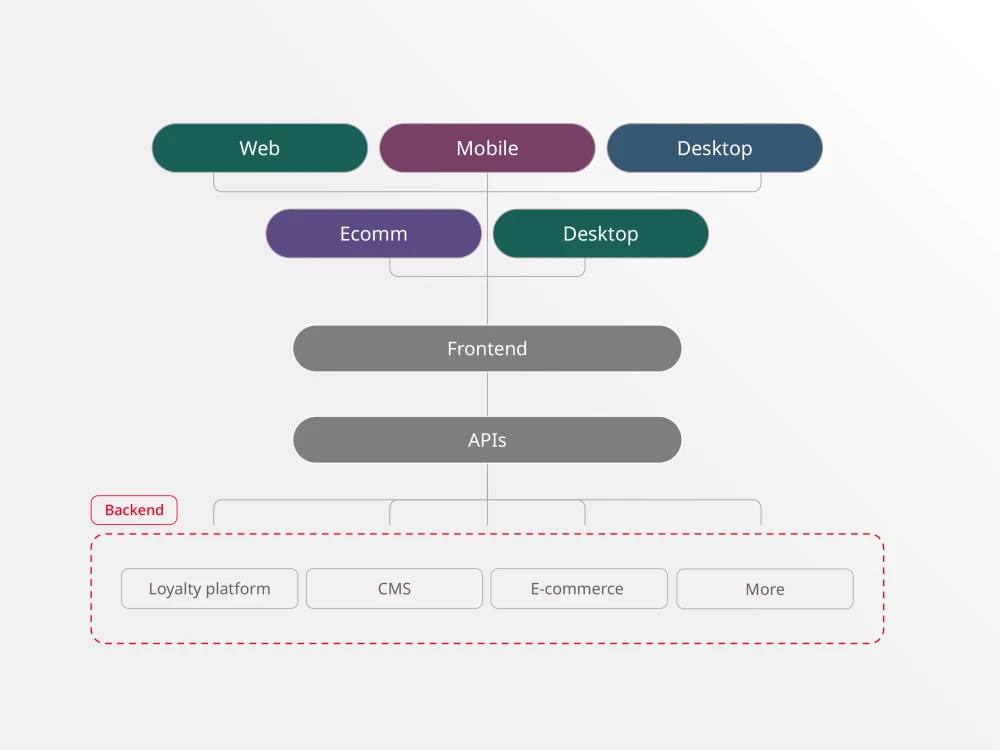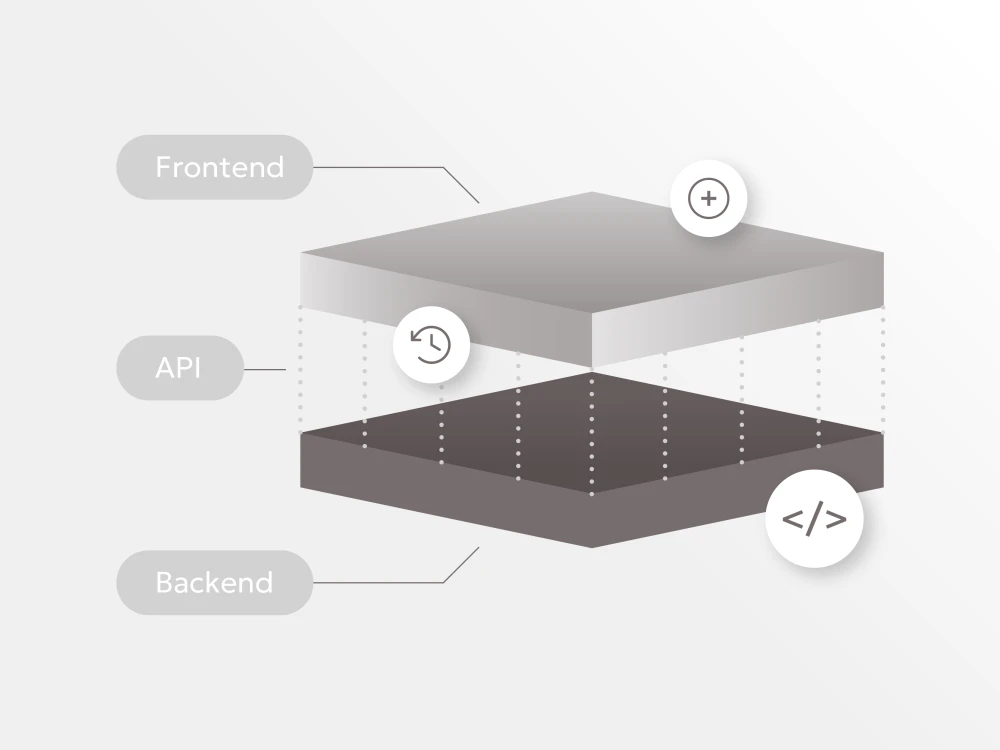Selecting an enterprise headless CMS is a pivotal decision for global organizations managing complex content needs. A modern enterprise headless CMS separates content creation from delivery, enabling seamless distribution across multiple channels through API technology. For companies with worldwide operations and multi-million-dollar revenues, finding a CMS that provides robust security, scalability and integration capabilities is essential to power consistent content experiences at scale.
What makes a content nanagement system enterprise-grade?
A truly enterprise-grade CMS goes beyond basic publishing capabilities by incorporating advanced permission controls and sophisticated workflow management. These platforms excel at handling massive content volumes while maintaining peak performance across multiple digital properties.
Modern enterprise systems provide granular access controls, enabling organizations to define precise roles for thousands of users across departments. They also feature comprehensive audit trails and version control mechanisms to maintain data integrity.
Built-in governance frameworks help enforce brand consistency and compliance requirements across all content operations. This becomes particularly valuable for regulated industries where content must meet strict standards before publication.
Real-world implementations showcase these capabilities — take a major media corporation managing 50,000+ articles across 12 brands through centralized workflows while maintaining distinct editorial voices.
Key business drivers for enterprise CMS solutions
Modern organizations recognize that strategic content delivery directly impacts revenue growth and market competitiveness. Research shows companies investing in robust content management solutions see up to 25% improvement in customer engagement rates.
Streamlined workflows reduce content production costs by automating repetitive tasks while maintaining quality standards. For example, a global consultancy cut production time by 40% after implementing centralized content management across their digital channels.
The rise of omnichannel marketing demands flexible content distribution capabilities. Organizations need platforms that support rapid expansion into new markets and channels while preserving brand consistency. A unified content strategy helps businesses respond faster to market opportunities and maintain competitive advantages in dynamic digital landscapes.
Understanding enterprise CMS architecture
Traditional vs headless approaches
When evaluating architecture options, enterprise organizations face a fundamental choice between approaches. A traditional CMS bundles content management and presentation layers together, offering familiar visual editing tools but limiting deployment flexibility.
In contrast, modern headless architecture separates these components entirely through APIs, enabling developers to build custom front-ends using their preferred frameworks. This separation provides greater creative freedom for technical teams while maintaining robust content governance.
Consider a financial services firm managing investor communications — their headless implementation allows seamless content distribution across web portals, mobile apps and digital displays while maintaining compliance requirements. The tradeoff comes in implementation complexity and the need for development resources.
Today’s leading enterprise platforms increasingly offer hybrid capabilities, combining visual editing tools with API-first architecture to balance flexibility and ease of use.
API-first development considerations
Successful API-first development requires careful attention to security protocols and robust authentication mechanisms. Organizations need comprehensive API documentation and standardized endpoints to maintain consistency across their digital ecosystem.
Performance optimization becomes paramount when dealing with multiple API calls. Implementing proper caching strategies and rate limiting helps prevent system overload while ensuring smooth content delivery.
Beyond technical specifications, development teams must plan for API versioning and backward compatibility. This approach allows for gradual updates without disrupting existing integrations. Clear API governance policies and monitoring tools help track usage patterns and identify potential bottlenecks before they impact operations.
Hybrid CMS capabilities
A hybrid CMS architecture delivers exceptional value by combining intuitive content creation tools with powerful distribution capabilities. Marketing teams benefit from user-friendly interfaces to manage digital experiences, while developers maintain the freedom to build custom solutions.
Brightspot’s platform exemplifies this approach through its robust visual editing tools paired with flexible deployment options. Content teams can preview changes across multiple channels before publishing, ensuring brand consistency at scale.
The system enables organizations to streamline global operations by centralizing content management while delivering localized experiences. For example, a nationwide publisher uses this functionality to manage content across dozens of local markets, each maintaining unique regional requirements.
Real-world applications demonstrate how hybrid solutions accelerate digital transformation — from dynamic mobile apps to personalized web experiences, all powered by a unified content hub.
Essential features of modern enterprise platforms
Multisite management tools
Centralized control empowers organizations to deploy and maintain multiple websites from a single dashboard. Brightspot’s platform enables teams to share assets, templates and user permissions across different properties while maintaining distinct branding for each site.
Global enterprises benefit from advanced localization features that support content adaptation for various markets and languages. For example, a leading automotive manufacturer manages 50 regional websites through one interface, reducing overhead costs by 30%.
The platform’s robust multi-tenant architecture supports:
- Role-based access controls for different teams and regions
- Shared media libraries across properties
- Automated content syndication between sites
- Customizable workflows for each brand or region
These capabilities help organizations scale their digital presence while maintaining operational efficiency.
Advanced security controls
Modern enterprises require sophisticated protection mechanisms to safeguard their digital assets. Brightspot delivers comprehensive authentication protocols through multi-factor verification and biometric access, ensuring maximum data protection across all touchpoints.
Beyond standard safeguards, the platform incorporates military-grade encryption for content storage and transmission. This proves invaluable for organizations handling sensitive information, as demonstrated by a global financial institution using Brightspot to secure communications across 30 countries.
Real-time threat monitoring and automated incident response systems provide constant vigilance against emerging cyber risks. The platform’s granular permission settings enable precise control over content access, while maintaining detailed audit trails of all system activities.
Workflow automation options
Brightspot’s intelligent workflow engine transforms how teams collaborate on content creation and distribution. The platform’s drag-and-drop interface enables marketing teams to design custom approval chains without technical expertise.
Through machine learning capabilities, the system can route content to appropriate reviewers based on type, channel, or market requirements. For instance, a global media company reduced content approval times by 40% using automated routing and parallel review processes.
The platform supports flexible publishing schedules with embargo periods and timed releases. Teams can set up automated content syndication across multiple channels while maintaining version control and audit trails. These features prove particularly valuable for organizations managing time-sensitive content across different time zones and markets.
Content modeling capabilities
Brightspot’s advanced content modeling framework enables organizations to create sophisticated content structures that adapt to evolving business needs. The platform’s intuitive interface lets teams define custom content types, relationships and validation rules without technical expertise.
Marketing teams can leverage powerful templating capabilities to maintain brand consistency while accommodating unique regional requirements. Take a global manufacturer who uses their CMS to manage product specifications across markets — from vehicle features to local pricing models.
The system’s flexible data architecture supports:
- Rich media integration for enhanced content experiences
- Dynamic field validation to ensure data quality
- Reusable content blocks for efficient scaling
- Modular components for rapid development
These tools empower enterprises to build robust content ecosystems that drive meaningful digital experiences.
Top enterprise CMS solutions for 2025
Brightspot’s enterprise offering
Brightspot’s 2025 enterprise platform delivers measurable business impact through its unified digital experience hub. The platform’s AI-powered content platform helps organizations achieve faster time-to-market for new digital initiatives.
Recent enhancements include advanced personalization capabilities that enable real-time content adaptation based on user behavior and preferences. For example, a global retailer leveraging Brightspot’s platform saw a 25% increase in customer engagement after implementing dynamic content targeting.
The platform’s seamless integration framework connects with over 7,000 business applications, from marketing automation tools to e-commerce platforms. This extensive connectivity empowers organizations to create cohesive digital experiences while maintaining operational efficiency across their technology ecosystem.
Adobe Experience Manager overview
Adobe Experience Manager stands out as a comprehensive digital experience platform designed for global enterprises seeking sophisticated content management capabilities. The platform excels in delivering personalized customer experiences through its robust visual editing tools and advanced asset management features.
Organizations benefit from AEM’s cloud-native architecture, which enables rapid deployment of digital initiatives across multiple channels. For example, major retailers use AEM to manage product catalogs spanning thousands of items while maintaining consistent brand messaging across regional markets.
The platform’s modular structure allows enterprises to scale operations based on specific business requirements. Marketing teams particularly value AEM’s intuitive interface for creating and managing multilingual content, while developers appreciate its extensive APIs for custom integrations.
Sitecore’s platform capabilities
Sitecore distinguishes itself through advanced personalization engines that adapt content in real-time based on user behavior patterns. The platform excels in multi-channel content orchestration, enabling organizations to manage complex digital experiences across web, mobile and IoT devices.
The platform supports sophisticated B2B scenarios with features like:
- Dynamic content targeting based on industry verticals
- Multi-language management with automated translation workflows
- Granular access controls for distributed teams
These capabilities make Sitecore valuable for organizations managing extensive digital portfolios across multiple markets.
Other leading vendors
- Magnolia CMS stands out in the enterprise landscape through its robust microservices architecture and exceptional integration capabilities. The platform excels at managing complex digital ecosystems while maintaining remarkable performance standards.
- Storyblok has emerged as a powerful contender, particularly valued by multinational corporations for its visual editing interface and modular content blocks. Their recent partnership with leading technology providers has strengthened their position in handling enterprise-scale deployments.
- Contentful’s developer-first approach resonates with organizations requiring extensive customization options. The platform’s composable architecture enables seamless content distribution across multiple channels, making it particularly effective for businesses managing extensive digital portfolios.
Integration capabilities for business systems
Marketing technology stack
Brightspot’s seamless integration architecture enables marketing teams to unify their entire digital ecosystem. The system connects natively with popular marketing automation tools like Marketo and HubSpot, while supporting customized workflows for unique enterprise needs.
Modern enterprises benefit from Brightspot’s built-in connectors that streamline data flow between CRM systems, analytics platforms and social media management tools. For example, a global media company reduced campaign setup time by 60% by leveraging these pre-configured integrations.
The platform’s flexible API framework allows marketing teams to create personalized customer experiences across channels. This approach helps large enterprises maintain brand consistency while adapting content delivery for different market segments and regional requirements.
E-commerce platforms
Brightspot’s commerce-focused architecture enables direct connection with major retail platforms like Shopify and WooCommerce. This powerful synergy allows businesses to manage product catalogs and digital assets through a unified interface.
The platform excels at bridging content and commerce through sophisticated product storytelling capabilities. Marketing teams can craft immersive shopping experiences by combining editorial content with real-time inventory data and pricing information.
Recent updates to Brightspot’s retail capabilities demonstrate remarkable results. A global fashion retailer reported a 40% increase in conversion rates after implementing dynamic product recommendations powered by the platform’s intelligent commerce engine.
Analytics and AI tools
Brightspot’s advanced analytics dashboard combines real-time performance metrics with predictive AI insights, enabling data-driven content decisions. The platform features native Google Analytics 4 integration alongside custom reporting tools for comprehensive audience tracking.
Through partnerships with leading AI providers like Amazon Comprehend, Brightspot automates content tagging and metadata generation. The system’s natural language processing capabilities enhance search accuracy while streamlining editorial workflows.
The platform excels in delivering actionable insights through customizable widgets that monitor key performance indicators. Marketing teams benefit from automated content recommendations and SEO optimization suggestions powered by machine learning algorithms.
Portal and intranet management features
Employee collaboration tools
Brightspot’s collaborative workspace transforms how teams interact and create content together. The platform’s intuitive interface enables seamless communication between departments through built-in messaging and feedback tools.
Teams benefit from real-time document editing capabilities, allowing multiple users to work simultaneously on projects while maintaining version control. The platform’s smart notifications keep everyone informed about project updates and deadlines.
A standout feature includes customizable dashboards that display relevant tasks and activities for each team member. For example, editorial teams can track content progress while designers monitor asset requests — all within their personalized views.
Document management systems
Brightspot’s robust document control system transforms how enterprises handle their digital assets. The platform offers sophisticated version tracking and automated metadata tagging to ensure precise document organization and retrieval.
Advanced permission matrices enable granular access control at both folder and file levels, while built-in audit trails maintain comprehensive records of document activities. For example, a global pharmaceutical company leverages these capabilities to manage regulatory documentation across 20 countries.
The platform’s smart archiving functionality automatically preserves historical versions while maintaining quick access to current documents. This approach helps organizations meet compliance requirements without sacrificing system performance.
Internal communications hub
Brightspot’s dynamic communication platform enhances organizational connectivity through targeted messaging and personalized content delivery. The system enables teams to create engaging internal newsletters, announcements and updates with rich media integration.
Smart audience segmentation ensures messages reach the right employees at the right time. For instance, a multinational corporation uses Brightspot to deliver region-specific updates to its 50,000 employees across different time zones and languages.
The platform’s engagement analytics provide deep insights into message effectiveness, helping communication teams refine their strategies. Real-time feedback mechanisms and social features foster authentic dialogue between leadership and staff, creating a more connected workplace culture.
Enterprise website development best practices
Custom development options
Brightspot’s development framework empowers technical teams to build sophisticated digital experiences through extensive API libraries and flexible deployment options. The platform’s modular architecture enables rapid prototyping and seamless integration with existing technology stacks.
Development teams benefit from comprehensive documentation and ready-to-use code snippets that accelerate project timelines. The system supports multiple programming languages and frameworks, giving developers the freedom to work with their preferred tools.
The visual development environment streamlines the creation of custom components and templates while maintaining enterprise-grade performance standards. Built-in testing tools and staging environments ensure quality control throughout the development process.
Performance optimization techniques
Brightspot’s advanced caching system revolutionizes content delivery through multi-layer optimization. The system leverages CDN integration and automated image compression to reduce load times significantly.
Smart resource management ensures peak website responsiveness by dynamically allocating server resources based on traffic patterns. For example, a major news publisher using Brightspot saw a 60% improvement in page load speed during high-traffic events.
The platform’s intelligent load balancing capabilities distribute requests across multiple servers, maintaining optimal performance even under intense user activity. Built-in monitoring tools provide real-time insights into performance metrics, enabling quick identification and resolution of potential bottlenecks.
Mobile-first approaches
Brightspot’s mobile-first architecture transforms how organizations deliver content across devices. The platform automatically optimizes images and layouts for various screen sizes while maintaining brand consistency and performance.
The platform’s smart content prioritization streamlines mobile experiences by delivering the most relevant information first. Through intelligent caching and progressive loading techniques, Brightspot maintains swift performance even on slower mobile networks.
Comparing open source vs. proprietary solutions
WordPress enterprise considerations
While WordPress powers over 40% of websites globally, enterprise deployments require careful evaluation of specific factors. Security remains a primary concern, with organizations needing robust vulnerability management systems and regular security audits beyond standard plugin updates.
Cost analysis reveals hidden expenses in enterprise WordPress implementations. Beyond hosting fees, businesses must factor in specialized development resources, premium enterprise-grade plugins and dedicated support teams.
Advanced workflow requirements pose unique challenges in WordPress environments. Large organizations managing multiple brands or regions may find limitations in native permission controls and content approval processes. For example, a multinational corporation might need custom development to handle complex multilingual content workflows across different time zones.
Implementation and migration strategies
Content migration planning
A successful migration begins with a thorough content audit and inventory assessment. Understanding your existing content structure, metadata and relationships enables precise mapping to the new system.
Brightspot’s migration tools streamline the transition through automated content classification and smart tagging capabilities. Organizations can maintain SEO rankings by implementing proper URL mapping and redirect strategies during the process.
The platform’s dual-phase migration approach allows teams to validate content integrity in a staging environment before going live. This methodology proves particularly valuable for enterprises managing extensive digital assets across multiple brands.
A clear data governance framework helps maintain content quality throughout the transfer, while built-in validation tools ensure compliance with organizational standards.
Team training requirement
Successful platform adoption hinges on comprehensive skills development for your workforce. Brightspot provides role-specific learning paths tailored to content creators, developers and administrators.
A global media company reduced their onboarding time by 40% through Brightspot’s interactive learning modules and hands-on practice environments.
The platform’s knowledge hub offers video tutorials, documentation and best practice guides accessible 24/7. Regular virtual coaching sessions ensure teams master advanced features like workflow automation and content modeling.
Professional certification programs validate expertise levels, while dedicated support channels guarantee quick resolution of technical questions during the learning process.
Launch timeline management
A well-structured launch sequence transforms your CMS implementation from concept to reality. The critical path methodology helps pinpoint dependencies and establish realistic deadlines for each phase of deployment.
Smart resource allocation plays a vital role in maintaining momentum throughout the launch cycle. By breaking down the rollout into smaller, manageable sprints, teams can celebrate quick wins while steadily progressing toward full platform adoption.
Brightspot’s launch dashboard provides real-time visibility into milestone progress and potential roadblocks. This data-driven approach enables project managers to make informed decisions about resource distribution and timeline adjustments when needed.
Future-proofing your enterprise CMS investment
AI and machine learning integrations
Brightspot’s AI-powered content engine now handles complex tasks like automated tagging, content recommendations and predictive analytics. The platform’s machine learning algorithms analyze user behavior patterns to deliver personalized experiences at scale.
Recent updates bring powerful natural language processing features for enhanced content creation and optimization. For example, a major retailer saw a 45% increase in engagement after deploying Brightspot’s smart content suggestions across their digital properties.
The system’s deep learning capabilities streamline workflows by automatically categorizing assets, generating meta descriptions and identifying trending topics. Marketing teams particularly value the platform’s ability to predict content performance and suggest optimal publishing times based on historical data.
These advanced features work seamlessly with existing content operations, making sophisticated AI tools accessible to non-technical users.
Scalability considerations
Robust infrastructure design ensures your CMS can handle surging content volumes and user traffic without performance degradation. Modern cloud architecture enables dynamic resource allocation, automatically scaling computing power during peak periods.
Built-in load balancing distributes requests across multiple servers, maintaining swift response times even as demand grows. For example, when major news breaks, media organizations need their CMS to instantly scale and serve millions of concurrent readers.
The platform’s microservices architecture separates core functions into independent modules. This approach lets teams upgrade specific components without disrupting the entire system while supporting rapid growth across global markets.










